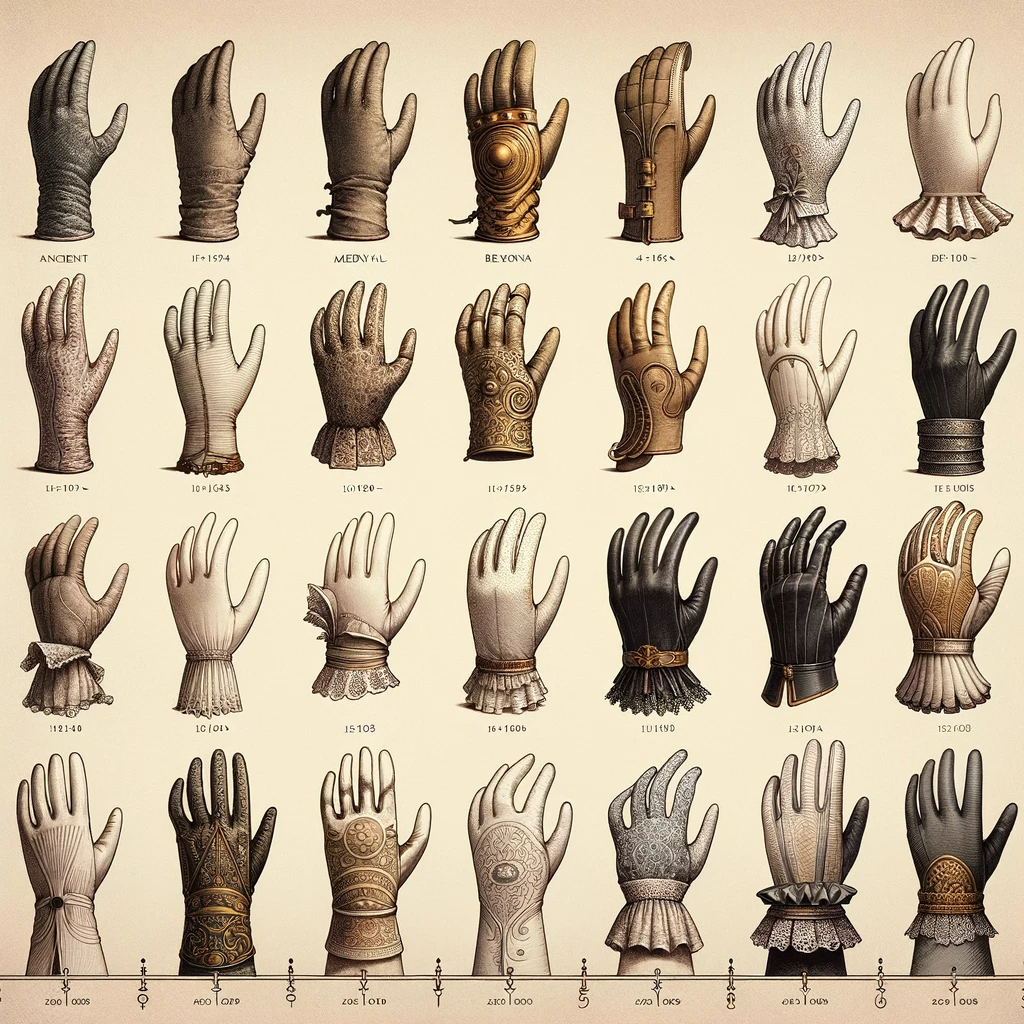
The Evolution of Gloves: A Look at the History
Share
From protecting our hands from extreme temperatures to providing a better grip, gloves have been an essential part of human history. They have evolved over time, from simple hand coverings made of animal skins to advanced modern-day gloves with specialized functionalities. In this article, we will take a closer look at the history and significance of handwear and how they have evolved over time.
Introduction
Gloves have been an important part of human civilization for thousands of years. They have been used for a variety of purposes, including protection, warmth, and grip. As technology and innovation have advanced, so too have gloves. Today, we have access to a wide range of specialized gloves, each designed for a specific task or profession. In this article, we will explore the evolution of gloves and their significance throughout history.
Origins of Gloves
The origins of gloves can be traced back to prehistoric times when early humans used animal hides to cover their hands. These early hand coverings were likely used for warmth and protection while hunting or gathering food. Over time, humans began to develop more advanced techniques for tanning hides and creating more complex garments, including gloves.
Ancient Gloves
Egyptian Gloves
The first recorded evidence of gloves dates back to ancient Egypt, where they were worn by royalty and members of the upper class. These gloves were often made of linen and were decorated with ornate designs and jewels. The ancient Egyptians also used gloves for religious and ceremonial purposes.
Roman Gloves
The Romans also wore gloves, primarily for protection during combat. Roman gladiators wore gloves made of leather to protect their hands during battles. Gloves were also worn by Roman charioteers to provide a better grip on their reins.
Medieval Gloves
During the Middle Ages, gloves became more common among the general population. They were worn as a symbol of social status and were often made of silk or fine leather. Gloves also became a popular accessory for knights and soldiers, who wore them for protection during battle.
Renaissance Gloves
In the Renaissance era, gloves became more elaborate and decorative. They were often embroidered with gold or silver thread and adorned with jewels and pearls. Gloves were an important accessory for both men and women, and they were often worn as a symbol of elegance and refinement.
Gloves in the Industrial Revolution
During the Industrial Revolution, gloves became more practical and functional. Workers in factories and mines wore gloves to protect their hands from machinery and harsh chemicals. The first rubber gloves were also developed during this time for use in medical procedures.
Gloves in the 20th Century
Driving Gloves
In the early 1900s, driving gloves became popular among automobile enthusiasts. These gloves were designed to provide a better grip on the steering wheel and to protect the hands during long drives.
Sports Gloves
As sports became more popular in the 20th century, gloves were developed for use in various athletic activities. Baseball gloves, for example, were first introduced in the late 1800s and have since become an essential part of the sport. Gloves have also been developed for football, hockey, and other sports.
Medical Gloves
Medical gloves were first introduced in the early 1900s for use in surgical procedures. The first surgical gloves were made of rubber, but advancements in materials science have led to the development of disposable latex and nitrile gloves, which are now commonly used in medical settings.
Modern-Day Gloves
Material Innovation
Modern-day gloves are made from a wide variety of materials, including leather, synthetic fabrics, and specialized materials like Kevlar and Gore-Tex. These materials offer improved durability, comfort, and functionality for a wide range of applications.
Specialized Gloves
In addition to traditional gloves used for warmth, protection, and grip, there are now many specialized gloves designed for specific tasks or professions. For example, firefighters wear specialized gloves that are heat-resistant and offer protection from flames and sharp objects. Similarly, astronauts wear gloves that are specially designed for use in space, with built-in heating and cooling systems and reinforced fingertips for gripping.
The Significance of Gloves
Throughout history, gloves have served many purposes, from protection and warmth to symbolizing social status and refinement. They have also played important roles in various professions, such as medicine, sports, and industrial work. Today, gloves continue to be an essential part of our lives, providing us with comfort, protection, and functionality.
Conclusion
From simple animal hide coverings to advanced modern-day gloves, handwear has come a long way throughout human history. As technology and innovation continue to advance, it's likely that gloves will continue to evolve and become even more specialized and functional. Whether we're protecting our hands from harsh chemicals or improving our grip on the steering wheel, gloves will continue to be an important part of our daily lives.
FAQs
- When were the first gloves invented?
The origins of gloves can be traced back to prehistoric times when early humans used animal hides to cover their hands.
- What were ancient Egyptian gloves made of?
Ancient Egyptian gloves were often made of linen and were decorated with ornate designs and jewels.
- What were driving gloves designed for?
Driving gloves were designed to provide a better grip on the steering wheel and to protect the hands during long drives.
- What are some specialized gloves?
Specialized gloves include those designed for firefighters, astronauts, and medical professionals.
- Why are gloves significant?
Gloves have played important roles throughout history, from protecting our hands to symbolizing social status and refinement. Today, they continue to be an essential part of our lives, providing us with comfort, protection, and functionality.
